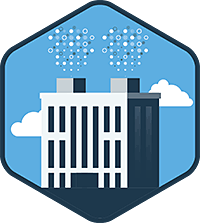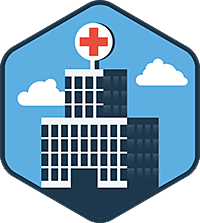What Owners and Managers of Buildings and Healthcare Facilities Need to Know about Legionella Water Management Program
Legionnaires’ disease is a serious type of pneumonia caused by Legionella bacteria, which live in water. People can get sick when they inhale water contaminated with Legionella. Maintaining building water systems is key to preventing Legionnaires’ disease. Owners and managers of buildings at increased risk for growing and spreading Legionella can protect people by developing a water management program.

What Are Legionella Water Management Programs?
Legionella water management programs identify hazardous conditions and include taking steps to minimize the growth and spread of Legionella in building water systems. Having a water management program is now an industry standard for large buildings in the United States.
Use this short worksheet to learn if your building needs a Legionella water management program.
How to Develop a Legionella Water Management Program
Developing and maintaining a water management program is a multi-step process that requires continuous review[1]. Below are seven steps to building an effective Legionella water management program. Every building is different (depending on factors such as the structure, age, location, occupants of the building, or surrounding conditions), so each one needs a tailored program.
-
Establish a water management program team
Your team needs members with certain skills to develop and implement your Legionella water management program. In some cases, you may need to train your in-house personnel or consider hiring professionals with specific environmental and Legionella experience. Consider who among your employees, partners, and outside experts can provide these skills so you can develop the most effective program possible. -
Describe the building water systems using flow diagrams and a written description
Include details like where the building connects to the municipal water supply, how water is distributed, and where hot tubs, water heaters or boilers, and cooling towers are located. -
Identify areas where Legionella could grow and spread
Identify where potentially hazardous conditions could occur in your building water systems, such as areas where water temperature could promote Legionella growth or where water flow might be low. -
Decide where you need to apply control measures and how to monitor them
Establish control measures and limits for each hazardous condition, as well as plans for where and how to monitor them. Control measures are actions you take in your building water systems to limit growth and spread of Legionella, such as heating, adding disinfectant, or cleaning. Control limits are the maximum value, minimum value, or range of values that are acceptable for the control measures that you are monitoring to reduce the risk for Legionella growth and spread. Control points are locations in the water systems where you can apply control measures. -
Establish ways to intervene when control limits are not met
Determine what corrective actions or contingency responses to take when control measures are outside of the control limits you established. -
Make sure the program is running as designed and is effective
Establish procedures, both initially and on an ongoing basis, to verify that your team is implementing the water management program as designed. Also, validate that the program effectively controls the hazardous conditions throughout the building water systems. Update the program when necessary. -
Document and communicate all activities
Document all the activities and communicate with building occupants, employees, and colleagues on a continual basis. If an event triggers you to review or update your water management program, remember to- Update the flow diagrams, associated control points, control limits, and corrective actions
- Update the written description of your building water systems
- Train those responsible for implementing and monitoring the updated program
Environmental Monitoring and Program Validation
Monitoring
- Water quality parameters such as disinfectant and temperature levels should be monitored regularly to ensure that building water systems are operating in a way to minimize hazardous conditions that can promote growth of Legionella and other germs that grow well in drinking water distribution systems.
Validation
- It is up to the team to determine how to validate the effectiveness of the program (i.e., confirm that the program is working as intended). One option for validation is to perform environmental testing for Legionella. If the team decides to test for Legionella, they should make specific decisions about sampling frequency, location, and methodology. Sampling plans are unique to each building and based on many contributing factors, such as
- Findings from the environmental assessment (steps 2 and 3 above) and any baseline Legionella test results
- Overall performance of the water management program, trend analysis of Legionella test results, and water quality parameters (e.g., disinfectant, temperature)
- In healthcare facilities, correlation of environmental testing results with clinical surveillance data
- Building characteristics (e.g., size, age, complexity, populations served)
- Sites of possible exposure to aerosolized water
- Available resources and supplies to support testing
Healthcare Facilities

In healthcare facilities, another option for validating the effectiveness of the program is to perform clinical surveillance for infections due to Legionella (e.g., pneumonia), which could indicate a problem with the facility’s water quality[2].
- Additional guidance is provided in the CDC/Healthcare Infection Control Practices Advisory Committee (HICPAC) Guidelines for Environmental Infection Control in Health-Care Facilities [240 pages, 2.31 MB] and Guidelines for Preventing Health-care-associated Pneumonia [179 pages].
In 2017, the Centers for Medicare & Medicaid Services released a survey and certification memo [4 pages] stating that healthcare facilities should develop and implement water management programs to reduce the risk for Legionella and other pathogens in their water systems.
- Learn more in CDC’s Healthcare Water Management Program Frequently Asked Questions.
Learn more from CDC’s toolkit: Developing a Water Management Program to Reduce Legionella Growth & Spread in Buildings.
1 ASHRAE 188: Legionellosis: Risk Management for Building Water Systems June 26, 2015. ASHRAE: Atlanta. www.ashrae.org
2 Annex A provides an alternative pathway for healthcare facilities to comply with ANSI/ASHRAE Standard 188-2015. Please check Section 4.3.2 of ASHRAE 188 for the prerequisites necessary to follow Annex A.
- Page last reviewed: September 18, 2017
- Page last updated: September 18, 2017
- Content source:


 ShareCompartir
ShareCompartir